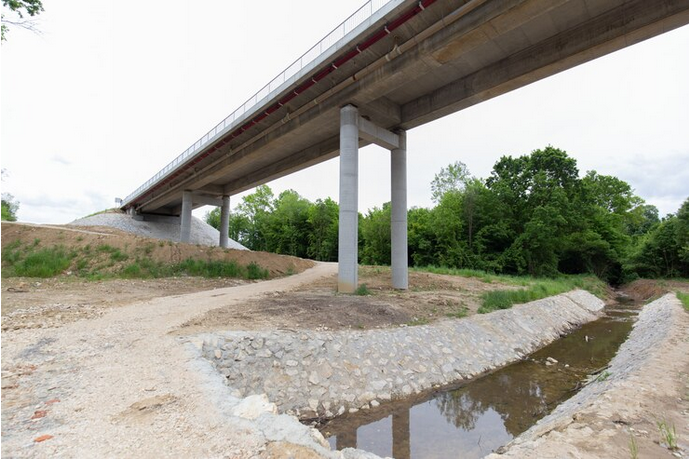In the realm of sustainable water management, the art of soakaway design plays a pivotal role in mitigating the impact of urban development on the environment. Soakaways, also known as infiltration basins or soak pits, are engineering solutions designed to manage stormwater runoff by allowing it to percolate into the ground. This eco-friendly approach not only prevents flooding but also recharges groundwater and protects water quality. Mastering the intricacies of soakaway design is essential for creating resilient and environmentally responsible drainage systems.
The Essence of Soakaways: Sustainable Stormwater Management
- Definition and Purpose: Soakaways are structures that facilitate the controlled infiltration of stormwater into the ground. The primary purpose is to manage surface water runoff from impermeable surfaces such as roads, driveways, and rooftops. By promoting the natural process of water absorption into the soil, soakaways reduce the risk of flooding, soil erosion, and pollution of water bodies.
- Components of Soakaway Systems: A typical soakaway system comprises various components, including an inlet to capture runoff, an underground storage area, and a means for water to gradually infiltrate into the surrounding soil. The storage area may be filled with permeable materials such as gravel or aggregate to enhance water absorption.
- Benefits of Soakaway Systems: The advantages of incorporating soakaways into stormwater management systems are manifold. They help to prevent localized flooding, protect downstream water bodies from pollution, and promote groundwater recharge. Additionally, soakaways contribute to sustainable development by reducing reliance on conventional drainage systems and minimizing the need for costly infrastructure.
Mastering Soakaway Design: Key Considerations
- Site Assessment: The foundation of successful soakaway design lies in a comprehensive site assessment. Factors such as soil type, depth to groundwater, and the presence of underlying geology significantly influence the effectiveness of soakaways. Understanding these site-specific conditions is crucial for tailoring the design to maximize water infiltration.
- Calculating Runoff and Sizing Soakaways: Accurate calculation of runoff is essential for determining the size and capacity of the soakaway system. Factors such as the area of impermeable surfaces, rainfall intensity, and local climate conditions all play a role in these calculations. Oversized or undersized soakaways can result in inefficiencies or system failures, emphasizing the importance of precision in design.
- Permeability Testing: Permeability testing is a fundamental aspect of soakaway design, providing insights into the soil's ability to absorb water. These tests, often conducted using boreholes or trial pits, help determine the appropriate size and configuration of the soakaway system. They ensure that the chosen location can effectively facilitate water infiltration.
- Choosing Suitable Materials: The choice of materials for the soakaway construction is critical. Permeable materials such as gravel or crushed stone are commonly used to create the storage area. The selection of these materials influences the rate of water infiltration and the overall longevity of the soakaway system. Sustainable and durable materials contribute to the effectiveness and environmental friendliness of the design.
- Consideration of Local Regulations: Soakaway design must align with local regulations and guidelines. Municipalities often have specific requirements regarding the use of soakaways, and obtaining necessary permits is essential. Compliance with regulations ensures that the soakaway system not only functions effectively but also adheres to environmental standards.
- Maintenance and Long-Term Performance: Ensuring the long-term performance of soakaway systems involves planning for regular maintenance. Routine inspections, sediment removal, and occasional cleaning contribute to sustained efficiency. Design considerations should include access points for maintenance activities, ensuring that the system remains effective over its lifespan.
The Environmental Impact of Masterful Soakaway Design
- Preserving Water Quality: Soakaway systems play a crucial role in preserving water quality by allowing stormwater to infiltrate the soil, which acts as a natural filter. This process helps remove pollutants and contaminants, preventing them from reaching nearby water bodies and ecosystems.
- Groundwater Recharge: A well-designed soakaway system contributes to groundwater recharge by allowing rainwater to percolate into the ground. This replenishes underground aquifers, sustaining water availability for wells, springs, and other water sources. Groundwater recharge is a vital component of ecological balance and human water supply.
- Erosion Control: Soakaways mitigate soil erosion by managing stormwater runoff. By reducing the volume and velocity of runoff, these systems prevent the scouring of soil and the erosion of valuable topsoil. This, in turn, protects landscapes, preserves vegetation, and maintains the stability of riverbanks and stream channels.
- Mitigating Urban Heat Island Effect: Urban areas often experience elevated temperatures due to impervious surfaces and reduced green spaces. Soakaway systems, by promoting the infiltration of water and supporting vegetation, contribute to mitigating the urban heat island effect. They enhance the overall resilience of urban environments to climate-related challenges.
Conclusion: Nurturing Sustainability Below the Surface
Mastering the art of soakaway design is not merely an engineering endeavor; it is a commitment to sustainable water management and environmental stewardship. Beneath the surface, where stormwater converges with the earth, soakaways emerge as silent guardians, channeling water in a way that harmonizes with nature.
In the journey towards resilient and sustainable urban development, soakaway design represents a fundamental paradigm shift. It is a testament to the power of working with nature, rather than against it, to address the challenges of stormwater management. As we delve into the intricacies of soakaway design, we unearth a blueprint for a future where water flows seamlessly, landscapes thrive, and the artistry of sustainable living unfolds below the surface.





Comments